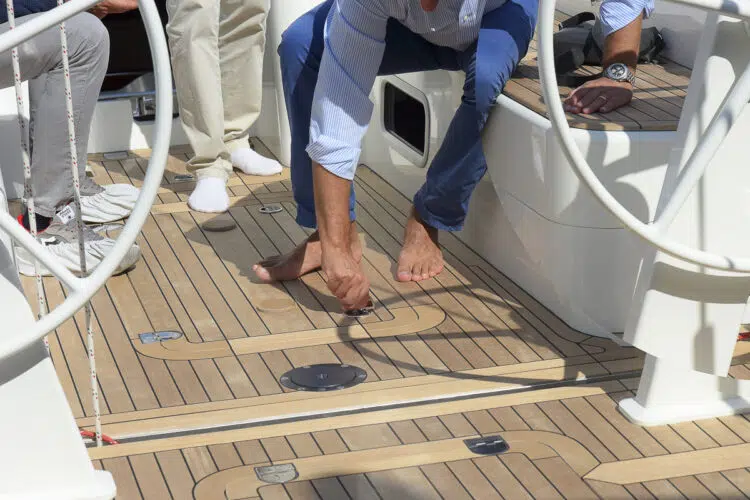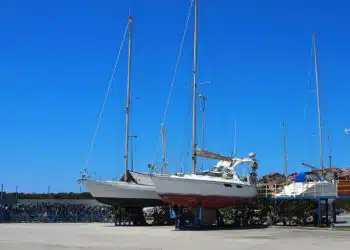The last two years have brought an unprecedented boom to shipyards and boat dealers. Many who previously only dreamed of buying a sailing or motor yacht are now proud owners. And who decides now for a shipyard-new ship, must count on a waiting period of several years. So rather invest in a used yacht? With these SeaHelp tips for successful used boat purchases, you will also be happy with a “second-hand yacht”.
As with all purchases, which are accompanied primarily by emotions and (romantic) imagination, also applies to the used boat purchase in the first place: not only listen to the gut feeling, but also turn on head and mind with. Otherwise, the supposed dream yacht unfortunately turns into a nightmare that brings trouble and costs. It is better to take enough time for the purchase of a ship and to plan carefully. This begins with a research for the eligible ship types, continues with a thorough inspection of the ship and ends in a sound purchase contract that secures buyer and seller.
Buying a used boat tip 1:
Involve the family
Those who prefer to spend their free time on the water, whether with a sailing or motor yacht, should involve their family, partner and also the potential crew in the purchase plans at an early stage. Maintaining one’s own ship is not only time-consuming, but also costly – maintaining it is only possible if everyone participates with enthusiasm and looks forward to spending their free time “on board” in the future.
The best way to find out which type of boat suits you best is to spend a few days on the boat of your dreams or on a comparable model. Especially sailing and motor yachts, which are built in large series, are often available for charter at various agencies, so that you can test without obligation whether this type of ship is really the right one.
Buy used boat tip 2:
Determine price
Before looking for the dream boat on the open market, it is necessary to “cash in” at home. A ship used as a leisure object should never become a financial burden in everyday life. In this respect, in addition to the purchase price, the annual costs (insurance, mooring, repairs, etc.) must be determined in order to find out how high the budget for one’s own yacht really is.
How much an aging ship is worth is unfortunately not as easy to estimate as with cars, which are built in large numbers and for which there is a generally accepted guideline with the “Schwacke” list. In addition to the age of the ship and the shipyard, the equipment and accessories that are to be sold with the yacht are decisive. You can get a good feel for how much a particular type of yacht costs by comparing various offers for sale on boat exchanges or at yacht dealers. However, the price originally called up is usually higher than the price actually obtained.
Used boat buying tip 3:
Thorough check of boat or yacht
To convince yourself of the condition of the ship, it is not enough that quietly in the harbor in his box lying ship on deck and under deck to examine and then spontaneously decide to buy. At least once, potential buyers should have the opportunity to go on an extensive trial run or test drive with the professional broker or the private seller. This is not only about getting a feel for whether one feels comfortable on board this particular ship, but also about subjecting all the technical equipment to a thorough check.
The more expensive the ship, the more important it is to call in a new expert early on to inspect the yacht thoroughly. As a rule of thumb, if the investment in a ship exceeds the half-yearly income of the owners, one should play it safe and consult experts and a lawyer for smooth handling.
Neutral experts prepare a brief report on the condition of the ship and realistically estimate the current value as well as any repair work. Considering the sums that change hands when a yacht is sold or bought, investing in an expert is more than sensible and should be budgeted for from the outset.
In order to detect hidden damage, e.g. due to grounding, or defects in the hull such as osmosis at an early stage, the vessel for sale should also be craned so that the prospective buyer can get an idea of the condition of the underwater hull, keel and rudder.
In addition, a look at the history of the ship helps to get a realistic picture of the condition. How many owners did the yacht have before it was sold again? Are all changes of ownership documented? Are there drawings of the hull, deck structure and wiring diagrams? The more complete the documentation of the yacht’s installations and modifications, the better. Of course, a yacht that is to be used for regattas must also have an up-to-date measurement certificate.
Buying a used boat tip 4:
Prepare contract
Has also the commissioned appraiser to purchase the ship approvingly raised the thumbs, it is now necessary to prepare the contract. Because even if a (Hanseatic) handshake is often sufficient in many cases: The word contract comes from Vertragen. And an investment object like a ship should not be handed over to other hands without the necessary paperwork.
Before the contract is drawn up, it must be clarified whether the ship is really the property of the seller and free of third-party rights – that is, whether it does not belong to an owners’ association, a leasing company or a bank. To avoid unpleasant surprises, buyers should also ask the seller to show them their identification card so that they can quickly detect a possible fraud attempt.
For yachts up to 15 meters in length, the Flag certificate provides information about ownership; if the vessel is even larger, it is registered in the shipping register. If an International Boat Certificate (IBS) is available, the name of the seller should also be entered here.
Even before the contract is signed, it must be clarified whether the VAT for the yacht has already been paid. Especially in the case of yachts located in other European countries and financed by a leasing company, it is possible that the VAT has not yet been paid in full. The previous owner can prove this by means of an invoice with VAT shown. In addition, the boat needs CE certification if it was placed on the market within the EU after June 16, 1998. Subsequent certification is possible.
Used boat purchase tip 5:
Signatures, payment, insurance
On numerous boat exchanges online and at various yacht insurance companies are sample purchase contracts for used yachts for download, which can be used in the private sale. It is important to specify in the contract not only the object to be sold – in this case the yacht – very precisely, but also to regulate the payment and handover modalities. Except for inflatable boats, dinghies or small motor boats, a vessel is rarely paid for in cash directly on the spot. The higher the purchase price is, the more experienced brokers recommend to secure the transfer of the purchase price by a bank guarantee or in trust.
Especially with high, existence-threatening purchase sums, the involvement of a lawyer as a trustee is inevitable. SeaHelp offers its members free legal advice to help with all questions related to the purchase and sale of a vessel: law@sea-help.eu. In addition, the purchase must take into account the innovations in warranty law for yacht purchases, which strengthen the rights of buyers and additionally extend the warranty to the provision of digital content. Here is a detailed, up-to-date article on the new warranty law for yacht purchases.
The paperwork is rounded off by a carefully completed handover protocol, in which it is recorded in detail which individual parts and equipment are being sold with.
Once the sale is complete, the proud new owner must take care of taking out yacht insurance. SeaHelp staff will assist new owners in selecting the appropriate insurance. For detailed questions, you can reach the SeaHelp yacht insurance staff by email insurance@sea-help.eu or directly by phone +43 (0) 6133 – 6272 15.
How much the yacht is insured is not measured by the purchase price, but by the real market value of the vessel. With most insurances the old contract continues to exist after the property transition still four weeks free of charge for the new owner, so that the can look around in peace for a new, for it suitable yacht insurance and compare different offers.
And then? Nothing stands in the way of a carefree, wonderful time on the water aboard your own yacht. New destinations are waiting to be explored. Sailing and skipper friends look forward to the first evening together in the anchorage. And the proud new owners have the good feeling to have done everything right with the purchase of exactly this ship.
And if something should go wrong, the SeaHelp staff will help with all kinds of mishaps. Especially in the first weeks and months with a new ship, operating errors often happen due to ignorance or lack of experience in handling the ship. Only through regular use of the ship do you know how long the batteries last, how the ship moves when at anchor, what to look out for when opening the sea valves and how much fuel the engine consumes. If you sign up for a SeaHelp membership right when you buy your new boat, you can rely on the help of the marine breakdown technicians. Overview of the Services of the SeaHelp 24/7 Breakdown Service.














